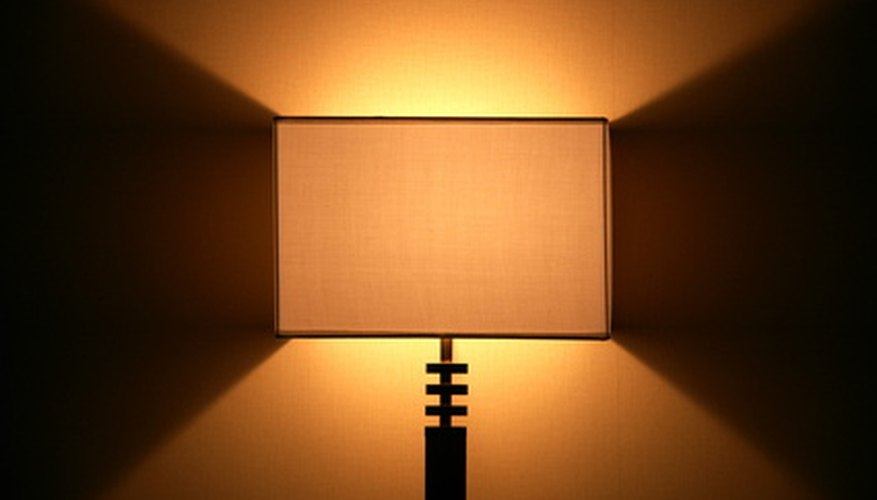Most of us have lamps in every room and eventually, no matter how careful we are, a lamp shade pulls apart, comes unglued, or is dented or torn and we are faced with deciding if we can repair the shade or whether we must replace it. Lampshades can be costly so making repairs is often a good choice if the shade is not badly damaged. It is also important to consider if the lamp is part of a pair in case you decide to change trim colours.
Vacuum the lampshade with a soft brush attachment to remove dust and debris. If you don't have this attachment use a soft brush and brush the surface of the lampshade inside and out.
- Most of us have lamps in every room and eventually, no matter how careful we are, a lamp shade pulls apart, comes unglued, or is dented or torn and we are faced with deciding if we can repair the shade or whether we must replace it.
- Vacuum the lampshade with a soft brush attachment to remove dust and debris.
Apply lampshade glue to the lampshade seam. Coat the seams of the top and bottom paper or fabric. Use bull clamps at the top and bottom of the shade to hold the seam in place while the glue dries.
Apply lampshade glue around the top or bottom ring if the tape has come unglued. The tape needs to be intact and in good condition to reglue it. If the tape is torn or ragged then remove the remainder of the tape. Attach new cloth tape starting at the lampshade seam. Press half the tape onto the outside of the shade. Notch the inside of the tape with scissors with a thin V cut every inch or so. This will allow you to fit the tape around the inside of the shade. Notch around the spider-frame wires. If you are using a paper tape and lampshade glue then add bull clamps to hold the tape in place while the glue dries.
- Apply lampshade glue around the top or bottom ring if the tape has come unglued.
- Press half the tape onto the outside of the shade.
Smooth and recontour dents. Lightly mist the paper with water and use a softly curved plate or bowl pressed along the inside of the shade to correct the dent.
Repair a small tear by repositioning the tear as close to its original position as possible. Cut a small piece of onionskin paper and use a small artist brush to coat the edges of the tear with glue. Coat one side of the paper with glue and press it over the tear as carefully as possible. When the paper dries it should be almost invisible.
TIP
Cover damage near the top or bottom edge by using wider ribbons glued over the damage.
